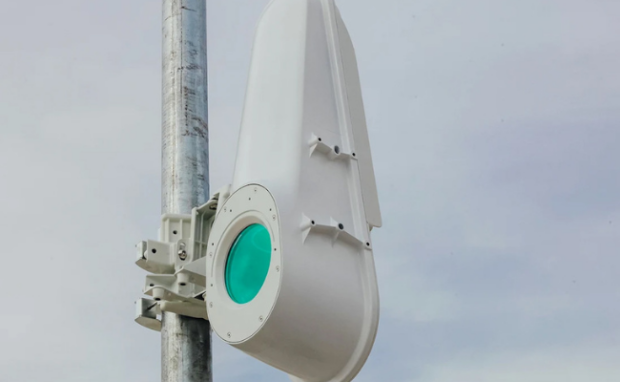Astranis to bring satellite internet to 2 million Filipinos
San Francisco-based company Astranis recently signed a deal to provide satellite internet for the Philippines. The satellite will launch in 2024 to serve underserved communities in the archipelago. As a result, it could bridge the “digital divide” and add $100 billion to the Philippines’ economic value by the end of the decade.
The Philippines spends the highest amount of time online in the Asia Pacific. However, few Filipinos use the internet productively for education and employment. Consequently, DICT Undersecretary Jocelle Batapa-Sigue said the country must expand connectivity to encourage more productive internet usage.
Astranis could be the key for millions of Filipinos to harness the power of the Internet. This article will elaborate on the space internet company’s plans to improve online access in the Philippines. Later, I will cover other projects that could enhance connectivity further.
How will Astranis improve Filipino online access?
Astranis partnered with satellite services provider Orbits Corp, which will purchase capacity with its sister company HTechCorp. The latter is a Philippine internet service provider.
TechCrunch said the tech firms did not share the financial details of their contract. Also, CEO John Gedmark’s Medium blog says former Congressman of the Philippines legislature, Atty. Augusto Baculio supports his project.
It plans “to connect unconnected regions, providing them with the tools necessary to thrive in the digital age.” Moreover, Gedmark emphasized his company will provide the country’s first dedicated satellite internet.
His orbital internet will provide reliable to disaster-prone areas like Barangay Caagutayan. Filipinos spend roughly 10 hours online, but most rely on fiber internet.
It relies on microwave towers and cables susceptible to floods and earthquakes. As a result, Gedmark says only 11,000 of the country’s 42,000 barangays (local communities) have coverage.
The Filipino government allegedly identifies these areas as Geographically Isolated and Disadvantaged Areas (GIDA). Moreover, these places typically lack healthcare access and earn less than $5,000 annually.
Gedmark expects his first satellite to link 5,000 sites to the Internet, providing access to two million people. Also, Astranis plans to work with the Department of Trade and Industry and the Department of Information and Communications Technology to serve the nation’s goals.
The CEO explained to CNBC what sets his company’s services apart from other satellite internet programs. Astranis satellites merge the small form factor of Starlink satellites with geosynchronous orbital ones from conventional companies like Viasat.
Geosynchronous orbit (GEO) means remaining roughly 22,000 miles from the Earth’s surface. That position allows a spacecraft to match the planet’s rotation. As a result, Astranis said it can “cover the entire Philippines with this one satellite.”
Other internet services for the Philippines

Photo Credit: arstechnica.com
Astranis is not the only satellite internet company that will serve the country. The most famous one, Starlink, already offers “high-speed, low-latency internet country-wide, even in the most rural and remote locations.
Its product webpage usually offers the installation kit for ₱29,320. At the time of writing, the company slashed the price to ₱19,999 until August 31, 2023.
Starlink also charges ₱2,700 monthly. Moreover, another major company is developing a unique method of providing internet access to rural areas.
Google’s Project Taara uses small, camera-like devices to beam internet access to remote locations via lasers. General Manager Mahesh Krishnaswawmy said, “This is as simple as a digital camera with a laser pointer.”
You may also like: How does satellite internet work?
A transmitter fires a laser containing data to the receiver’s camera so the latter can decode and turn them into bytes. Contrary to popular belief, the internet beam works in harsh conditions.
Google says Taara works in forested regions, urban areas, bodies of water, and railway tracks. Also, it provides internet speeds of up to 20 Gbps within a radius of 20 km. Network operators can deploy Project Taara to the following:
- Cross challenging terrain
- Relay high-capacity backbone
- Provide redundancy path
- Extend fiber backhaul
- Augment radio backhaul
- Improve network resilience
Conclusion
Astranis signed a deal to bring satellite internet to the Philippines. As a result, CEO John Gedmark will close the digital divide for roughly two million Philippines.
The Internet is essential for modern education, employment, and businesses. Expanding online connectivity could significantly boost the national economy.
You can read the tech leader’s Medium blog for more information. Moreover, learn about the latest tips and trends in online technology and more at Inquirer Tech.
Read Next
Subscribe to INQUIRER PLUS to get access to The Philippine Daily Inquirer & other 70+ titles, share up to 5 gadgets, listen to the news, download as early as 4am & share articles on social media. Call 896 6000.
For all the latest Technology News Click Here
For the latest news and updates, follow us on Google News.



